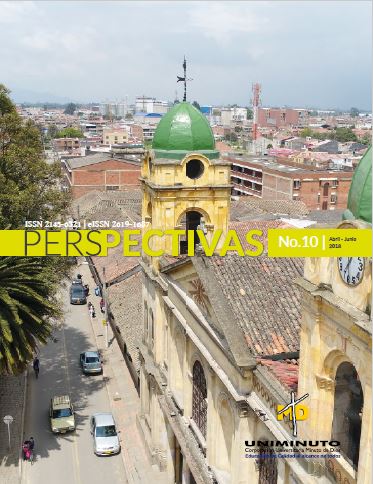Las Neurociencias y su aplicación pedagógica en el aula, región Magdalena Centro municipios de Chaguaní, Vianí, Bituima, Guayabal de Síquima (Cundinamarca)*
Barra lateral del artículo
Cómo citar
Detalles del artículo
Contenido principal del artículo
Resumen
El presente artículo propone una revisión del conocimiento y aplicación de las neurociencias dentro del aula de clase, a partir de un análisis derivado de la aplicación de instrumentos de medición de conocimiento en esta disciplina a los docentes de las instituciones departamentales de algunos de los municipios que conforman la provincia de Magdalena Centro (Cundinamarca).
El objetivo del mismo es identificar la situación actual de la neuroeducación o la neurodidáctica y su aplicación pedagógica en el aula en esta zona del departamento; asimismo, demostrar que las neurociencias están diseñadas para optimizar los procesos de enseñanza-aprendizaje soportados en nuevas estrategias y tecnologías educativas centradas en el funcionamiento del sistema nervioso central gobernado por el cerebro como órgano principal del ser humano.
Referencias
4, 327–362
Campos, A. L. (2010). Neuroeducación: Uniendo Las Neurociencias y La Educación En La Búsqueda
Del Desarrollo Humano. La Educación, 143, 1-14.
Cerda, H. (1993). Los elementos de la Investigación. En E. E. B. LTDA (Ed.) (2.a ed., p. 439). Quito
Francis-Salazar, S. (2005). El aporte de la neurociencia para la formación docente. Revista
Electrónica Actualidades Investigativas En Educación, 5(1), 1–19. https://doi.org/http://dx.doi.
org/10.15517/aie.v5i1.9116
Hoyos, S. P. (2013). Centro de Pensamiento en Estrategias Competitivas -CEPEC, (C), 44. Recuperado de
http://www.cundinamarca.gov.co/wps/wcm/connect/4b30c1b2 - 9 2 8 2 -4daa-b98d-
1092ab31a8a6/Plan+de+competitividad+Ubate. pdf?MOD=AJPERES
Moreno, A. (2012). El Sistema nervioso: Anatomía general. Acta Biológica Colombiana, 5, 1–30.
Proal, E. (2013). Actividad Espontánea Del Cerebro. Neurociencia Cognitiva, 143-148
Artículos más leídos del mismo autor/a
- Jairo Alexander Velásquez Beltrán, Jairo Fernando Orjuela Segura, Identificación del estado emocional en niños de diez a quince años de la institución educativa departamental Fray José Ledo del municipio de Chaguaní (Cundinamarca) y su relación con las neurociencias en la fase escolar , Perspectivas: Vol. 3 Núm. 10 (2018): Abril-Junio

